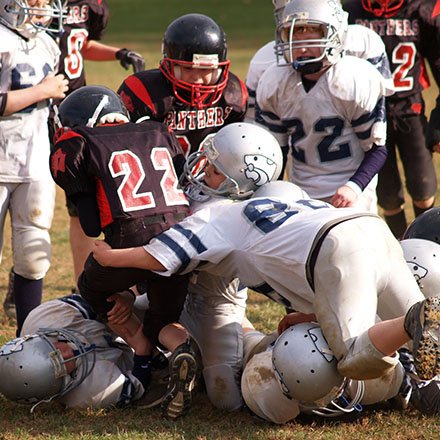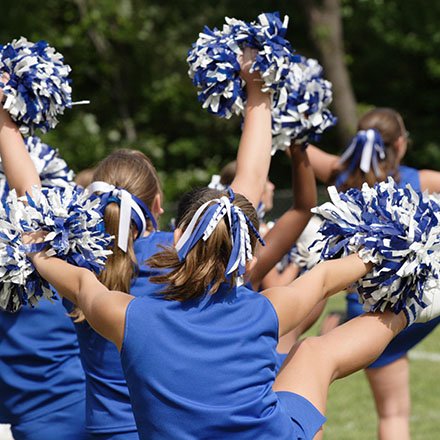Empowering Young Patients: A Candid Conversation with an Orthopedic Surgeon on Transformative Non-Opioid Pain Relief Methods
Effective postsurgical pain management can impact a child’s recovery and ability to get back to the sports and activities they love. We enlisted Dr. Paul Sethi – an orthopedic surgeon specializing in sports medicine – to discuss the importance of understanding available non-opioid pain control options, particularly when it comes to youth sports injuries and related surgeries.
As part of our educational partnership with Pacira BioSciences, Inc. – a company leading the charge in driving awareness and education around non-opioid pain management – read our Q&A with Dr. Sethi as we learn about how and why he provides an enhanced recovery for his younger surgery patients while minimizing the use of opioids.
Question: In recent years, providers have been looking for alternative pain management approaches that minimize patients’ exposure to opioids. This is especially important for adolescents and youth athletes who likely have not been previously exposed to opioids. What prompted you to develop your opioid-sparing pain management protocol?
Youth athletics comes with a myriad of physical and psychosocial benefits, however, participation also comes with risk of injury, despite the best prevention efforts. Even when all precautions are taken to minimize risks, injuries are sometimes out of our hands as parents, guardians, coaches, and physicians. But what occurs after that injury doesn’t have to be out of our control. What I am passionate about is educating patients and parents alike that opioids should not be the first line of defense when it comes to treating pain for youth athletes, especially after surgery. Studies have demonstrated that the risks and complications of many opioid-based pain management approaches may be magnified in children.
In fact, the unwanted side effects from these medications – including nausea, confusion, constipation, dizziness – actually impede postsurgical recovery and make it more difficult for young patients to get back to their rehabilitation, school, and active lifestyles, let alone back to playing the sports they love.
Further, young athletes, especially those at the high school and collegiate levels, are under tremendous pressure (whether self-imposed or not) to play and perform at the highest levels of their sport. This pressure, coupled with a mentality to get back to playing no matter the cost, can have dangerous mental health implications ranging from anxiety, depression, and isolation, with the feeling of loss of identity when a player is sidelined with an injury or surgery. The worst thing we can do for these young players who are struggling to cope with injury is to prescribe large quantities of opioids and send them on their way. This risky combination has the potential to be the trigger for a lifetime of struggle with opioid dependence or addiction. In the case of surgery specifically, data demonstrates that nearly one in ten patients prescribed opioids to manage postsurgical pain may go on to long-term use, meaning they are still taking those opioids 3 to 6 months after their procedure.
If misuse or addiction develops at an early age, it can be a significantly harder road toward recovery, and unfortunately, the disease of addiction often starts with prescribed opioids. According to data from the Centers for Disease Control and Prevention, fatal overdoses in teens ages 14 to 18 jumped 123% from 2019 to 2021.
This is why I made it my mission to take a different approach to pain management in my practice – one that significantly reduces, and in many cases eliminates altogether, my patients’ need for opioids after surgery.
Question: What non-opioid options did you implement into your pain management approach?
I use a “multimodal” approach to pain management, which just means I use a combination of non-opioid medications that work on different parts of the body, to provide effective pain control that doesn’t rely on opioids. This opioid-sparing approach has allowed for an overall enhanced recovery experience for my student and collegiate athletes.
A key component of this pain regimen is a long-acting numbing medication that gets injected during surgery. This option works locally – meaning it is applied only to a specific area of the body where surgery is performed – and numbs that area during and after the procedure. Medication is slowly released into the surgical area, which helps patients manage their pain for those first days after surgery when pain is usually the worst. Think of the numbing injection you get at the dentist when you have a filling or tooth pulled. This option does the same thing but allows the numbing medication to work for several days after surgery (vs. the several hours you get from the dentist). It is the only long-lasting local analgesic approved for children ages 6 and older, so it really has been a difference-maker in my practice and for my patients.
Question: What has this shift to a non-opioid approach meant for your patients and practice?
First and foremost, my opioid prescribing has changed considerably. In the most common sports-related injuries we treat, that which require surgery, like ACL repair, shoulder labrum repair, or Tommy John surgery, we’ve seen significant decreases in the number of opioid medications patients are taking, which has led to decreased prescribing. Even when we do prescribe these medications, patients typically report only taking one or two, or in some cases, none at all.
Even further, the improvements I’ve seen in the recovery process overall with this approach have been nothing short of amazing. Patients are reporting well-controlled pain to minimal pain. They are up and moving sooner, and they are more alert after surgery. For orthopedic procedures, this is especially important, knowing that the quicker patients can rehabilitate, the quicker they can get back to the activities they love. You can watch a testimonial from one of my youth athlete patients here.
Additionally, important healing takes place in the days immediately following surgery, so once the long-acting medications wear off, patients are already more comfortable and typically able to manage any residual pain with over-the-counter pain relievers like ibuprofen and acetaminophen.
Anecdotal feedback from patients’ recovery teams—most often their parents—has also been great. Parents are excited and relieved to see their children recovering comfortably, with a clear head and the ability to undergo physical therapy as they begin their rehab journey. Importantly, their opioid exposure is significantly reduced or avoided—meaning their risks of side effects or severe downstream consequences like addiction or dependence are also reduced—and taking home less pain medication means less risk of leftover pills that can pose risks for diversion or future misuse.
Question: Why should providers educate their patients about non-opioid options, especially when it comes to student-athletes?
Patients and their parents should know there are options available to them that can optimize their post-surgical recovery experience while minimizing the use of opioids. Surgery can be a significant life event for patients of any age. For our young patients, this is often their first potential exposure to opioids, and the medication risks coupled with the stress surgery places on an athlete can be a dangerous combination. This is why I’m committed to driving awareness that there are FDA-approved, safe, and effective non-opioid options that can pave the way for a smooth postsurgical recovery with reduced opioid requirements and better patient satisfaction.
Long-acting, non-opioid options have not only allowed me to shift away from opioids, but I have also seen first-hand their ability to provide an overall better recovery experience for my patients, which is a big relief for their parents.
Arming parents and patients alike with education about available non-opioid options empowers them to not only seek these interventions out, but to find surgeons who are committed to using low- and no-opioid strategies in surgeries ranging from sports-related injuries to other common procedures for young patients like scoliosis repair, wisdom tooth extraction, and even tonsillectomy.
Question: How should parents and patients start the conversation about pain management with their providers?
Don’t be shy. If your surgeon doesn’t mention pain management in your child’s consult, bring it up yourself. Be prepared and create a list of questions in advance. This can help alleviate many of the unknown aspects of your child’s procedure and help set expectations for before, during and after surgery. To take the guesswork out of this question list, download a discussion guide directly to your device to bring to your next appointment.
To learn more about pain management, injury prevention, and what to do if your child needs surgery, visit ncys.org/safety/pacira/.
Paul Sethi, MD is a board-certified orthopedic surgeon specializing in sports medicine conditions of the elbow, knee and shoulder. He is a leading research physician who speaks at academic and instructional medical conferences in the US and abroad. His research on athletic performance while a resident surgeon at Yale, his studies of professional basketball players, and his experience as a college varsity athlete have provided Dr. Sethi with an informed perspective of sports-related injuries and conditions.
Dr. Sethi has served as orthopedic consultant to the Los Angeles Dodgers baseball team and is a former assistant team physician of the Los Angeles Lakers basketball team, Los Angeles Kings hockey team and the Los Angeles Dodgers. He is also a former assistant team physician of the University of Southern California football team. Dr. Sethi currently serves as team physician to Greenwich High School, Brunswick High School and Iona Preparatory High School. In regular speaking engagements, he asserts that proper fitness conditioning is essential to preventing sports injuries for professional as well as amateur athletes.
Dr. Sethi is a consultant of Pacira BioSciences, Inc.




